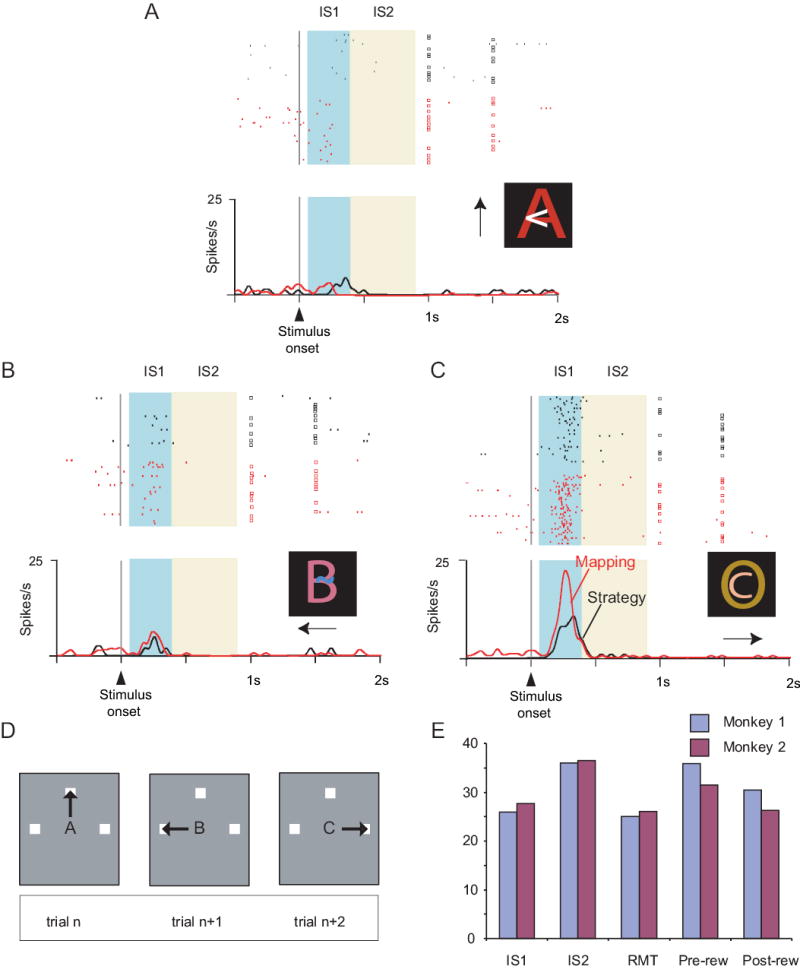Fig. 1.

A. Sequence of task events. Gray rectangles represent the video screen, white squares show the three potential response targets (not to scale), the white dot illustrates the fixation point, and the converging dashed lines indicate gaze angle. Disappearance of the instruction stimulus was the trigger stimulus, after which the monkeys made a saccade (solid arrow) and maintained fixation at the chosen target. The target squares then filled with white, and reinforcement (dotted arrow), when appropriate. B. Penetration sites. Composite from both monkeys, relative to sulcal landmarks. C. Strategy task. Responses shown by the thick arrows in the middle column represent correct applications of the repeat-stay (pink background) or change-shift (blue background) strategies. + indicates a rewarded response; − an unrewarded response. If unrewarded, the monkeys then got a second chance to respond, and received reinforcement for choosing the saccade made least recently (right). D. Example sequence for the strategy task. The red circle and slash indicates a disallowed response.
